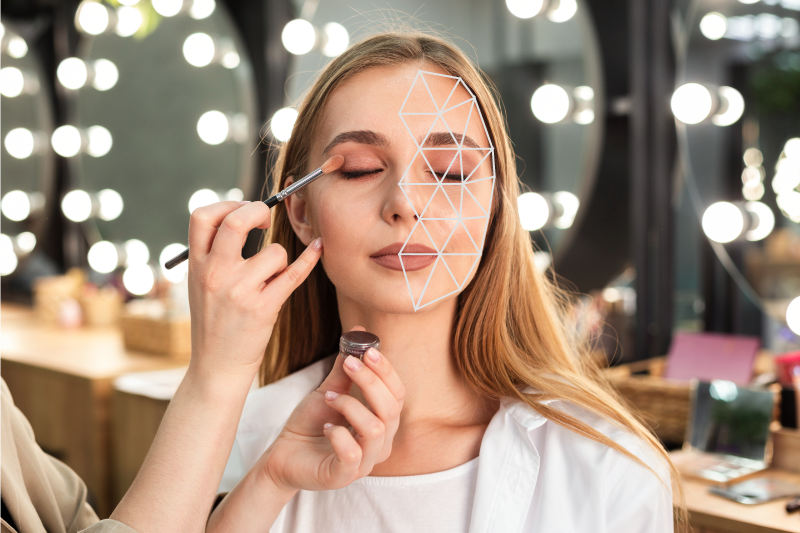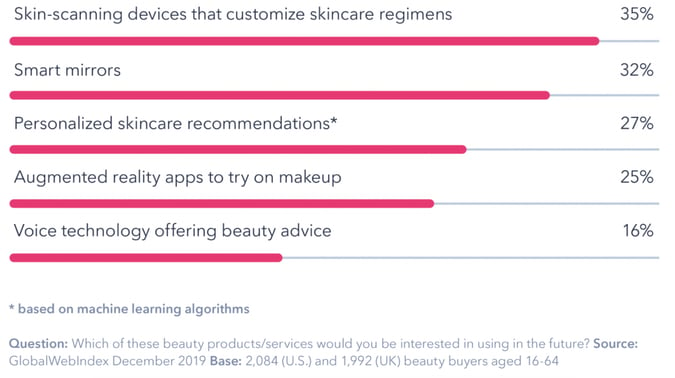Even before the pandemic changed business as we know it today, the beauty industry was already in the throes of change. Simply because their buyers were becoming savvier online and were looking for better experiences. Buyers were getting used to voice searches and purchases. They were getting used to online trial apps. They were already used to highly relevant products being marketed to them each time they scrolled down their social media apps.
With the massive shifts in global social interactions, everything has moved online. This has created a new set of expectations from buyers, who want the best of offline and online experiences, the best of 'phygital' - seamlessly integrated physical and digital experiences. Let's explore what they are looking for and how beauty brands can respond to them.
Intelligent and Convenient Buying Experiences
Consumers expect brands to introduce services that bring in the ease of digital processes. They want more choice and greater convenience, delivered as in-store and online experiences that help them make confident purchase decisions. This is getting manifested as a host of virtual try-on solutions, product recommendations based on data analytics, and a growing beauty devices market.
Creating the Beauty Product Basket
What began as novelty offerings by a few big brands are fast becoming the norm. Some of the core tech-enabled beauty services that consumers are interested in are skin-scanning devices, virtual try-on, smart mirrors, and voice-enabled beauty product recommendations.
The key reason why consumers are warming up to these solutions is the convenience they bring. The ability to try on multiple shades of lipstick from a preferred brand with a virtual try-on solution is hassle-free, gives consumers greater choice, and makes them more invested in the choosing process. Being able to search for beauty products with voice commands has the same appeal. Also, given the dramatic transitions in current human interactions, digital product experience solutions that don’t require consumers to physically interact with others will be critical for the continued growth of beauty brands.
Making the Purchase
Once the choices are made, consumers also want to be able to seamlessly buy the product right from within the application. So a tight integration between the high-fidelity, AR-driven selection experience, and the eCommerce based buying experience has become a key expectation. Similarly, the ability to complete product purchase with voice commands is another interaction that's set to increase, with voice shopping projected to reach USD 40 billion in sales by 2022.
How Can Brands Leverage This?
Two-third of buyers say affordability is an important factor when purchasing beauty products, rising to 73% among females. However, tech-enabled beauty solutions are often seen as luxury services, and a key challenge for brands is to break this perception.
One way to do this is to start deploying these solutions within the beauty buying journey, at no cost to the consumer. Free-to-use applications that enhance the buyer experience - virtual try-ons, interactive questionnaires, beauty scanning and analysis - can be shared with consumers to increase their engagement, and try out more products. These same solutions can also be deployed in-store, to increase footfall, and drive up purchases.

For brands already offering interactive beauty applications, there is scope to get more out of them. Adding data collection and processing layers atop such applications will allow brands to increasingly personalize the buyer experience. Machine learning algorithms can parse through the large volume of data from virtual try-on sessions and customer interactions across a brand's other channels, to create highly personalized product recommendations and lay the groundwork for catering to another key customer expectation.
Personalized Care
With increasing personalization across online experiences, customers expect the same from beauty brands as well. What’s driving this expectation is the desire to stop the trial-and-error method of finding a product that suits individual requirements. So beauty brands need to start playing a proactive role in helping consumers choose the products that are a better fit for them.
Brands can view this need for personalization in a few distinct ways:
- The basic expectation around personalization is to get a bespoke shopping experience where the final result is a product recommendation that best suits a consumer’s requirements.
- A step up from this is the expectation that a beauty brand will anticipate individual consumer requirements, and suggest products that they need, but aren’t actively searching for yet.
- And finally, the expectations are around customized products that are formulated based on a consumer’s individual characteristics.
How Can Brands Leverage This?
Personalization, whether that’s in the form of product recommendations or customized products, appeals to the consumer’s sense of individuality. It heightens the perceived level of care/service they receive from the brand, and hence predisposes them to associate more with the brand.
That said, delivering on this customer expectation is almost entirely dependent on the brand’s ability to build and deploy data solutions. In addition to the beauty tech products that we talked about, it is the ability to capture data about buyers across various touchpoints that will set up the brand to create better experiences. Based on the data gathered from various systems - information shared with in-store advisors, answers to online questionnaires, virtual try-on sessions, past purchases, social media conversations - product recommendations can be made to the buyer on the channel they are most comfortable with.
As the brand's repository of data grows, machine learning and predictive analytics can enable brands to offer products and services that are more and more in alignment with each buyer's expectations.
Transparent and Meaningful Engagement on Social Media
While social media as a marketing channel is not a radically new concept for brands, it has evolved to become something more valuable for lifestyle, and especially beauty brands. The content that beauty brands put out on their social handles has a huge impact on purchase decisions, by driving both the macro perceptions of the brands, and the micro perceptions of their specific products and services. Collecting and analyzing this data, together with data on social activity around different brand keywords and hashtags becomes crucial for positively influencing purchase decisions.
Discovering Beauty Brands
More than television ads or billboards or even department stores, consumers expect to find out about new brands and new products on Facebook or Instagram. A survey by GlobalWebIndex found that a total of 70% of beauty buyers discover brands via ads on social media, or posts and recommendations on these channels.
Choosing Beauty Brands for Personal Use
Buyers, especially Gen Z, want to associate brands that do well on parameters like inclusivity, sustainability, and clean product formulations. How brands address these issues are a key differentiator in the market, all communicated through their social media platforms, and evidenced in their new product lines, in-store and online experiences. And that's crucial because 56% of GenZ decide whether a brand is for them or not just by looking at their social media handles.
Making Product Purchase Decisions
At the micro-level, social media, with its army of influencers and proliferation of DIY videos, creates and consolidates the market for beauty products. Consumers expect good product recommendations to come from their favorite YouTubers and Instagram accounts. They trust a product coming from these influencers because these people appear accessible and relatable, and yet aspirational for the consumers. So when a brand’s eye shadow palette is being used to create dramatic looks by almost every beauty influencer online, sales are bound to rise.
Engaging with Beauty Brands
Social media platforms are also where consumers go to share their personal experiences with beauty products, both good and bad. As they share new looks and styles while experimenting with a brand product, or start conversations around it, or recommend it on their feed, they create huge volumes of user-generated content. They expect brands to pay attention to this, especially when they raise issues or challenges, or highlight how brands can do better.
How Can Brands Leverage This?
The criticality of social media in the beauty ecosystem creates multiple high-value opportunities for brands. They can
- Leverage social channels to consistently create and deliver on a brand promise that emphasizes on inclusivity, sustainability, and clean products
- Curate and highlight user-generated content to create more loyal and engaged customers, and drive brand loyalty
- Explore innovations around virtual influencers―brand accounts that build up a niche following and share product recommendations much like human influencers. These also give brands greater control over content, and leverage machine learning to give personalized recommendations on individual chats with consumers.
What's the last word here? It's down to listening to the buyers and customers, even more closely. At what their frustrations and expectations are and then finding digital solutions to meet them exactly where they are, with the offerings that are right for them.
Srijan is operating in this rapidly transforming beauty landscape and is engaged with some of the leading beauty brands to deliver digital solutions that cater to changing customer expectations. Primarily working with AI-enriched data capabilities, we are helping beauty brands create data solutions atop existing digital experiences, and deliver personalized services.
Whether it's enhancing the virtual try-on experience or creating interactive digital platforms for product trials and purchase, our teams are equipped to build future-ready solutions for the beauty brands.
Ready to explore how exactly your brand can leverage data solutions at key junctures in the consumer experience? Start a conversation with our expert team.
Our Services
Customer Experience Management
- Content Management
- Marketing Automation
- Mobile Application Development
- Drupal Support and Maintanence
Enterprise Modernization, Platforms & Cloud
- Modernization Strategy
- API Management & Developer Portals
- Hybrid Cloud & Cloud Native Platforms
- Site Reliability Engineering







